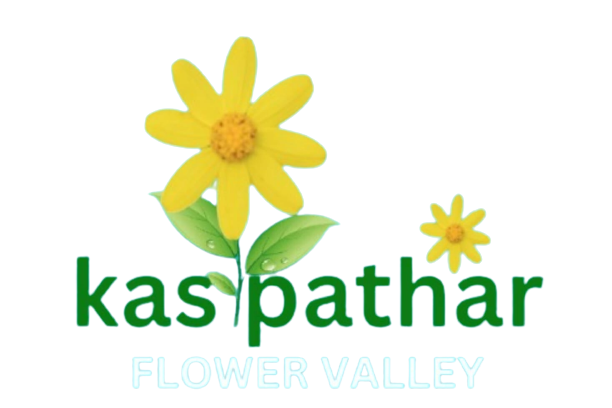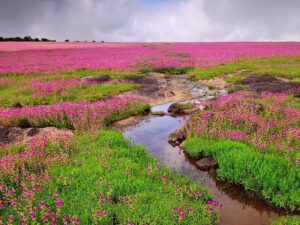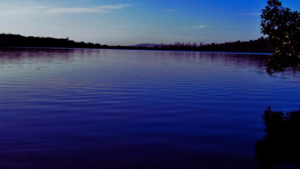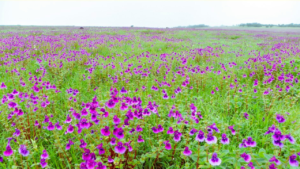Nestled in the Western Ghats of Maharashtra, the Kaas Plateau, known as the ‘Plateau of Flowers’, transforms into a vibrant landscape each monsoon. While the plateau is renowned for its floral diversity, the surrounding region also boasts some of the most enchanting waterfalls that add to the area’s magic. This article will guide you through these hidden gems, offering a refreshing escape into nature’s lap.
Introduction to Kaas Plateau and Its Natural Splendor
Kaas Plateau, a UNESCO World Heritage Site, comes alive with a riot of colours from August to October when numerous wildflowers bloom across its vast expanse. However, the monsoon season brings out the colours and breathes life into several majestic waterfalls around this area, making it a perfect getaway for nature lovers and adventure seekers alike.
Exploring the Waterfalls Near Kaas Plateau
Location and Features
Ekiv waterfall
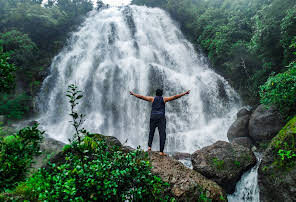
Ekiv is a Village in Jawali Taluka in Satara District of Maharashtra State, India. It belongs to the Pune Division. It is located 28 km west of District headquarters Satara and 3 km from Kaas Plateau.
Bhambawali Vajrai Waterfall
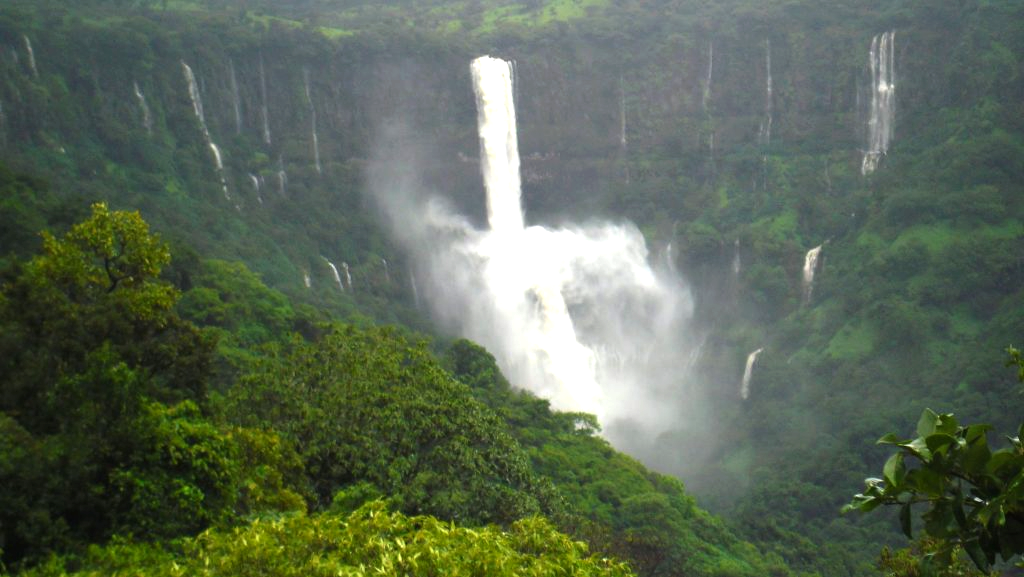
Bhambavli Vajrai Waterfall stands as the highest waterfall in India, with a height of 1840 ft (560m) cascading down a sheer cliff in three distinct stages. The source of the waterfall is the river Urmodi, which also marks the origin of the river. Located in the district of Satara in western Maharashtra, the waterfall is approximately 5 km from the famous Kaas Plateau.
The Majestic Thoseghar Waterfall
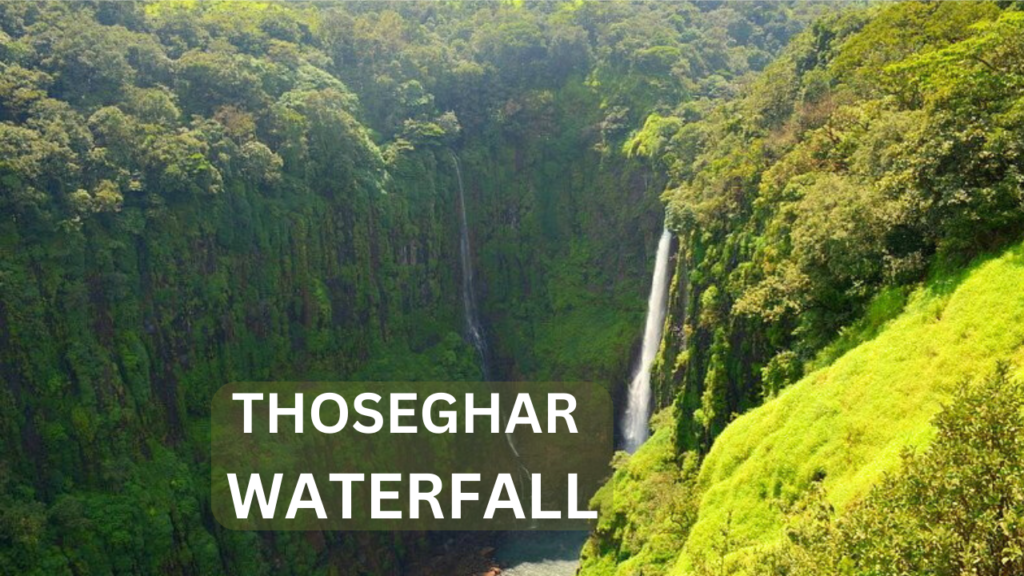
Thoseghar Waterfall, situated around 20 kilometres from Satara city, stands out due to its dramatic plunge from a height of about 500 meters. The area around the waterfall is tranquil and covered with lush greenery, providing a stark contrast to the thunderous noise of the falling water.
Read More Blogs:-
Exploring the Beauty of Kaas Plateau Season
Kaas Pathar Photography Tips and Tricks
Best Time to Visit
The best time to visit Thoseghar is during the monsoon months from June to September when the waterfall is at its fullest.
The Serene Lingmala Waterfall
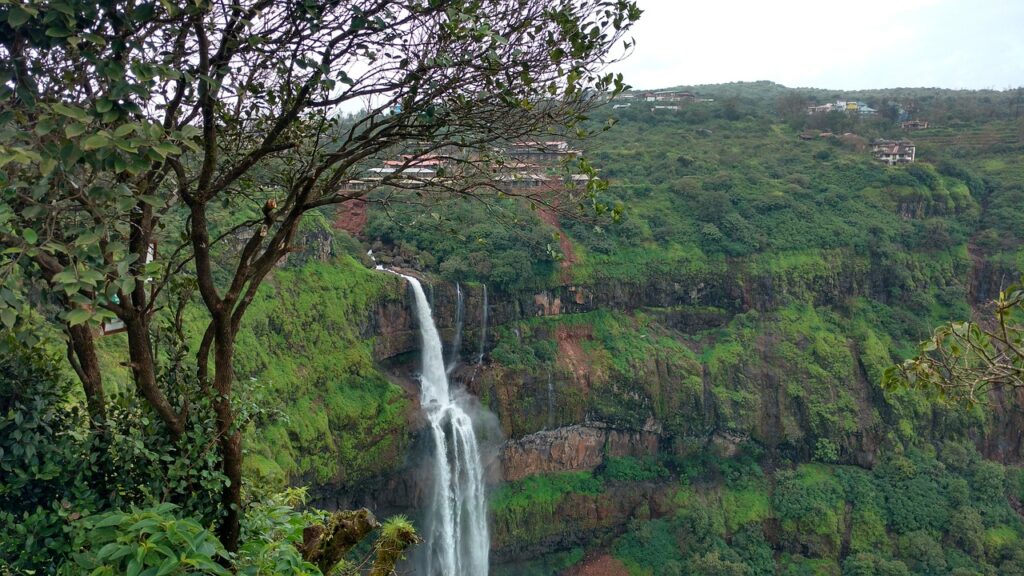
Access and Surroundings
Located near Mahabaleshwar, approximately 6 kilometres from the main town, Lingmala Waterfall offers a scenic view with water cascading down from 600 feet. The path leading to the waterfall is enveloped in dense foliage, making the trek a refreshing experience in itself.
Visitor Tips
To fully enjoy Lingmala, plan to visit early in the day to avoid the afternoon crowds and to capture the best light for photographs.
The Hidden Jewel: Dhobi Waterfall
Unique Aspects
Lesser known compared to its counterparts, Dhobi Waterfall lies close to Mahabaleshwar and merges into the Koyna River. It’s a fantastic spot for those looking to enjoy some quiet away from the popular tourist spots.
Activities
The area around Dhobi Waterfall is ideal for picnics and light treks, making it a perfect family outing spot.
What Makes These Waterfalls Special?
Each waterfall near the Kaas Plateau has its unique charm. From the sheer magnitude of Thoseghar to the serene drops of Lingmala and the secluded beauty of Dhobi, these waterfalls provide not just natural beauty but also a respite from the hustle and bustle of city life. The accessibility of these waterfalls also varies, offering something for every level of adventure enthusiast.
Essential Precautions for Monsoon Travel
Weather Considerations
Check Weather Forecasts Regularly: Stay updated with the latest weather conditions. Websites like the India Meteorological Department provide accurate forecasts which can help in planning your travel days.
Prepare for Rain: Always carry waterproof clothing, including raincoats, ponchos, and waterproof bags for your electronics and important documents.
Health and Safety
Avoid Leeches and Insects: Wear long-sleeved shirts and pants. Use insect repellents and carry salt or leech socks to deal with prevalent leeches during the monsoon.
Conservation Efforts and Sustainable Tourism
“Preserving the natural beauty of the Kaas Plateau region is crucial. As visitors, we must ensure we leave no trace behind and support local conservation efforts.”
Importance of Conservation
The ecological balance of the Kaas Plateau and its surroundings is delicate. The flora and fauna here require stringent measures to ensure their protection. Visitors are encouraged to adhere to guidelines set by local authorities to minimize environmental impact.
Supporting Local Communities
Engaging with and supporting local communities can also enhance the sustainability of tourism in the region. Opting for local guides or staying at community-run homestays can make a significant difference.
Conclusion: A Call to Explore and Preserve
The waterfalls near Kaas Plateau offer a mesmerizing escape into nature’s wonders. As you plan your visit, respect the natural environment and support the local economy. Whether you’re a seasoned trekker looking for your next challenge or a nature enthusiast eager to capture the beauty of cascading waters, the waterfalls around Kaas Plateau await with open arms and unparalleled beauty.
Remember, the best trips are those where we not only take memories but also leave a positive impact. Happy exploring!
How long did you wait to enter Ekiv Waterfall?
No wait, easily accessible. Park your vehicle on the road, and just 2-3 minutes of climbing to the waterfall.
When did you visit the waterfall?
You can visit from July to September, when the waterfall is in its full glory, gushing with force and creating a magnificent display. The weekend is a better option.
Is Vajrai waterfall the highest waterfall in India?
Bhambavli Vajrai Waterfall holds the title of being the tallest waterfall in India, standing at a height of 1840 ft (560m). The waterfall cascades down a sheer cliff in three distinct stages. The source of the waterfall is the river Urmodi, making it the origin of this river.
Which biggest waterfall in Maharashtra?
Thoseghar Waterfalls – The Biggest Waterfall In Maharashtra.
